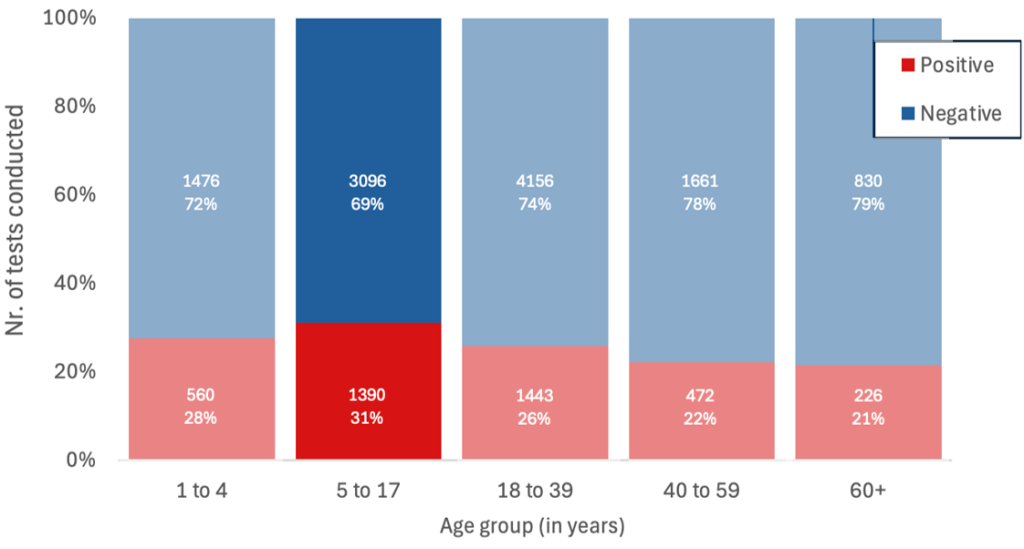Despite significant progress in recent years, this progress is now stalling—and in some cases reversing—across the continent.
A combination of emerging threats is fueling this trend:
- Rising drug and diagnostic resistance
- The spread of new mosquito species into African urban centers
- The escalating impacts of climate change
- A dramatic decline in malaria-specific funding, including the dismantling of USAID, which alone contributed over $500 million annually
At the same time, Africa’s health systems are under growing pressure—from rapid population growth, aging demographics, and the persistent brain drain of healthcare professionals.
In this context, the PharmAccess approach—turning real-time data into rapid, targeted action—is more critical than ever.
Turning Data into Action:
Kisumu County (Kenya) Detects Malaria Spike among Adolescents—And Reacts Swiftly
At PharmAccess, we’re proudly participating in DIDIDA (Digital Innovations and Diagnostics for Infectious Diseases in Africa)—an European Union supported partnership pioneering (digital) diagnostics to strengthen Epidemic Preparedness in Africa. A recent example from Kisumu County, Kenya shows just how powerful data can be when ‘dashboarded’ and reaching policy makers at the right time.
Between July 2024 and March 2025, the DIDIDA malaria dashboard (co-developed with the Kisumu Department of Health) revealed a concerning trend: a 31% malaria positivity rate dolescents aged 5-17, well above the 24% average across other age groups. These findings are directly visible on the DIDIDA dashboards and in addition were shared during our routine quarterly review with Kisumu County health officials. This led to immediate action:
What Kisumu Did Next
Kisumu County DoH rapidly rolled out targeted interventions:
- Integrated malaria education into school health clubs.
- Expanded testing and treatment through community health units in schools.
- Mobilized community health promoters to raise awareness among parents and caregivers.
What’s Next: Sustained & Scalable Interventions
Looking ahead, Kisumu County is planning to:
- Distribute long-lasting insecticidal nets (LLINs) to school-going children.
- Introduce intermittent preventive treatment (IPTsc) in schools within high-burden areas.
- Strengthen school-based surveillance to guide future interventions.
Why This Matters: A Blueprint For Smarter Public Health
This case is a powerful example of what’s possible when digital innovation meets local leadership. With tools like the DIDIDA dashboard, health officials can spot emerging trends, act quickly, and allocate resources to where they’re needed most.
At PharmAccess, we’re committed to helping health systems across Africa make smarter, faster decisions—and move closer to universal health coverage through digital transformation.
DIDIDA dashboard: Cumulative malaria tests (Jul 2024 – Mar 2025) per age group in Kisumu County

Red = positive cases; blue = negative cases. Highest positivity rate in age group 5-17 years (31%).

Department of Health team


